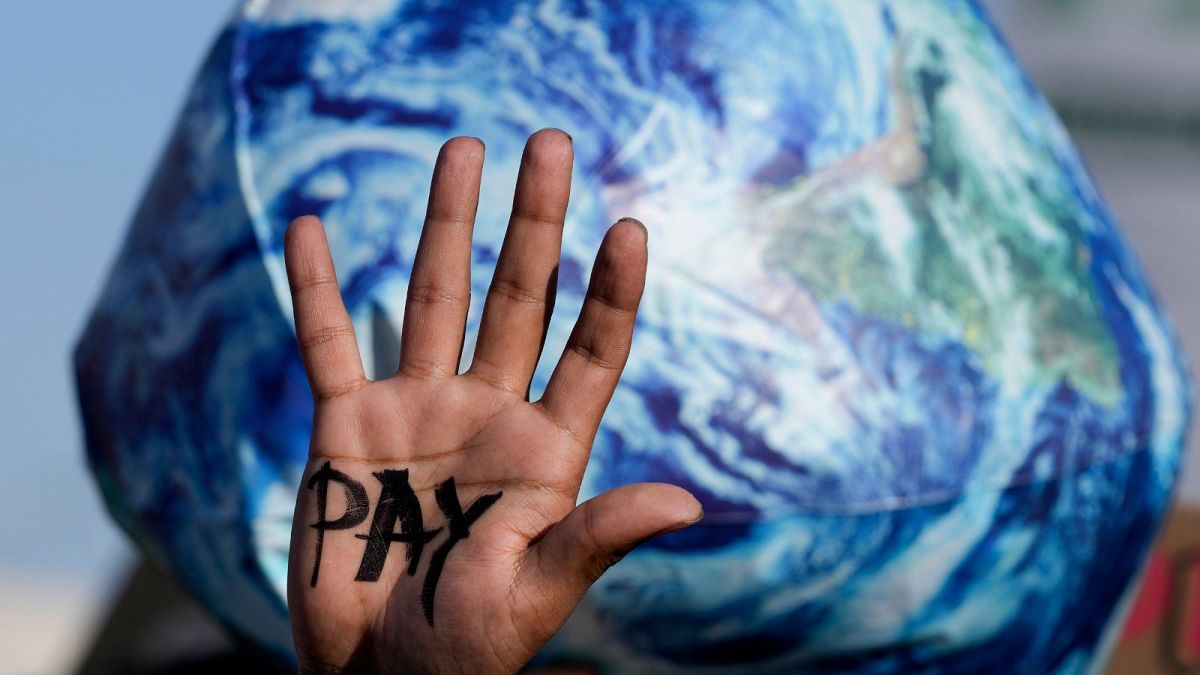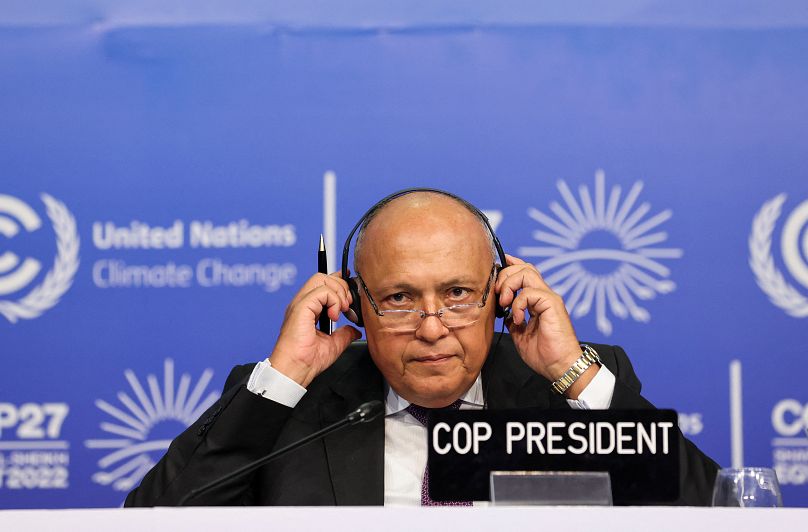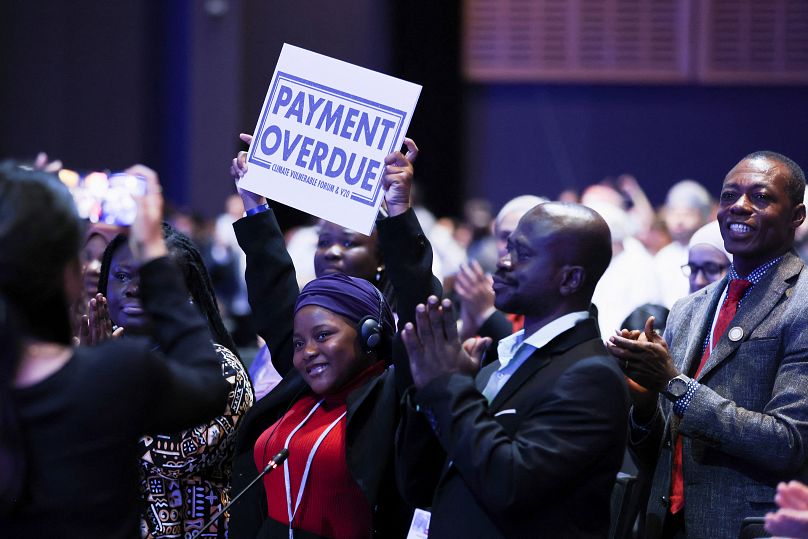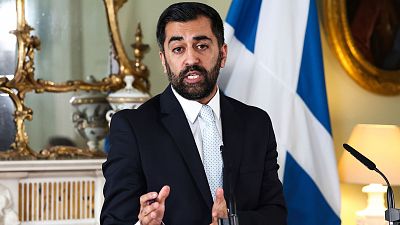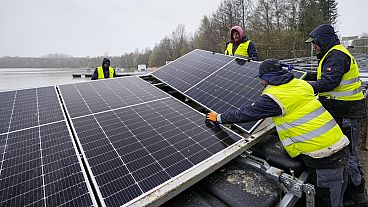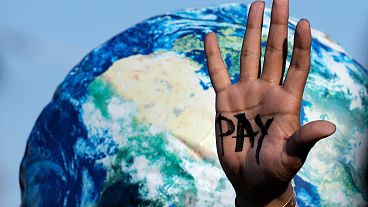The draft cover decision has been released, but leaves many questions around loss and damage - plus a possible typo - unanswered.
A new global climate agreement is currently being thrashed out in Egypt that will shape the course of planetary warming this century.
With the stakes so high, organisers are having to extend the talks, which were due to finish today, into the weekend.
A full draft cover text, which summarises countries’ commitments, was published this morning. This follows the first release of a draft of the deal yesterday (17 November) which left many issues still to be resolved.
Here’s what we know so far about the deal set to be forged at the Sharm El Sheikh UN summit.
Countries agree to keep global warming below 1.5C average
Amid all the facts and figures at COP, this is the big one. Without limiting global warming to 1.5C above pre-industrial levels, as per the Paris Agreement, climate scientists have repeatedly warned that the world is heading towards climate disaster.
COP26 in Glasgow last year left the 1.5 goal in reach but with a weak pulse, concluded then COP president Alok Sharma. Extending the medical metaphor, UN Secretary-General Antonio Guterres said it was in “intensive care, and the machines are shaking” at the start of COP27.
A boost came from the G20 meeting in Bali earlier this week, where leaders recommitted to 1.5. “A reference to 1.5 will make our lives easier in the closure,” a senior negotiator told Euronews.
That appears to be the case already. The draft cover text “reaffirms the resolution to pursue efforts to limit the temperature increase to 1.5°C”, “recognising” that the impacts of climate change will be much lower at this temperature increase compared with 2C.
Are fossil fuels being phased down or out?
One of the fiercest textual battlegrounds in Glasgow was over the wording on coal. After a last minute intervention from India - which is heavily reliant on the fossil fuel - the commitment to “phase-out” coal was tempered to “phase-down”.
There has been much wrangling with this phrasing at COP27, after a surprising call from India to have “phase down” of all fossil fuels in the draft agreement.
But that didn’t make it into today’s draft. Instead, under the mitigation section, the document reaffirms the call to Parties to speed up the energy transition, “including accelerating efforts towards the phaseout of unabated coal power and inefficient fossil fuel subsidies.”
However, some experts have suggested that “phase out” is likely a typo as “phase down” is a more logical continuation of the Glasgow pact.
There’s no reference to phasing out oil and gas, the other two main fossil fuels that countries are extracting at unsustainable rates.
Is renewable energy discussed in the draft deal?
‘Renewable energy’ has made it into the cover decision text for the first time, however. The energy section states that the conference “recognizes that the global energy crisis” is making energy security more challenging. This, it says, underlines “the need to accelerate clean and just transitions to renewable energy during this critical decade of action.”
On net zero, the draft “urges” long-term strategies towards breaking even on emissions “by or around midcentury.”
What does the draft text say about loss and damage?
Loss and damage refers to the ways in which vulnerable countries are already reeling from the impacts of climate-related disasters, and the pressing need for funds to address this.
Since making it onto the agenda for the first time at the start of the fortnight, the issue has been a focal point for climate justice campaigners, who are demanding a new finance facility be set up.
The EU announced this morning that it agrees to establish a loss and damage fund - to mixed reaction from other groupings and countries, many of whom say more clarity is needed.
A key question hinges on who the fund is for exactly. The EU’s proposal refers to the “most vulnerable countries”, including least developed countries and small island states. It appears to exclude, for example, Pakistan, which has suffered the highest death toll from a climate-related disaster this year with its record-breaking floods.
The COP draft text welcomes the agreement reached on the Santiago Network on Wednesday, which provides technical help for those facing loss and damage. First drafted in 2019, it’s now being fully activated as this draft decision lays out, with an advisory board to be established - including Indigenous, women and youth members.
But crucially, the cover text currently has ‘placeholder’ brackets when it comes to the actual funding arrangement responding to loss and damage.
How are loss and damage negotiations going?
The negotiating text for the Sharm el-Sheikh directive on responding to loss and damage has more detail on the options being discussed. All three options now refer to developing countries that are "particularly vulnerable" to climate harms, which suggests the EU is exerting its influence.
It’s not just the beneficiaries of a new loss and damage fund which is being hotly contested. All eyes are now on the US and China to see how they’ll respond to the EU’s new stance. China because the pressure is on to see if it will also join the donor base; although strictly classed as a developing country under the UNFCCC framework from 1992, it’s now the world’s second biggest economy, and now second biggest historic emitter.
The US has previously made clear that it is opposed to a new fund and - at the time of writing - has not yet responded to the EU’s proposal.
What about mitigation and adaptation finance?
Loss and damage funding has risen up the agenda, but developed countries have a long-standing commitment to deliver climate finance that they are not meeting.
The cover text currently “expresses grave concern” that developed countries’ promise to mobilise $100 billion (€96 bn) per year by 2020 - which they promised to work towards in 2009 - has not yet been met.
It urges rich countries like the US and UK to meet the goal and “address the shortfall” over the last two years.
When will an agreement be reached at COP27?
Although today is meant to be the last day of COP27, the conference is going into overtime.
“We need to shift gears again, time is not on our side," Egyptian’s Foreign Minister Sameh Shoukry, who chairs the COP27 talks, told delegates today. He added that he remains "committed to bringing this conference to a close" on Saturday in an "orderly manner."
The UN is reportedly planning a plenary (meeting for all Parties) for midnight on Saturday, and negotiations could go on as late as Sunday.
This is the trajectory of COPs over the years, and it presents some logistical challenges for organisers who yesterday agreed to extend transport and catering services.
On a more serious note, Sebastien Duyck, a senior attorney at COP27, warns that “Negotiations by exhaustion is particularly taxing for small delegations representing the people most affected.”
